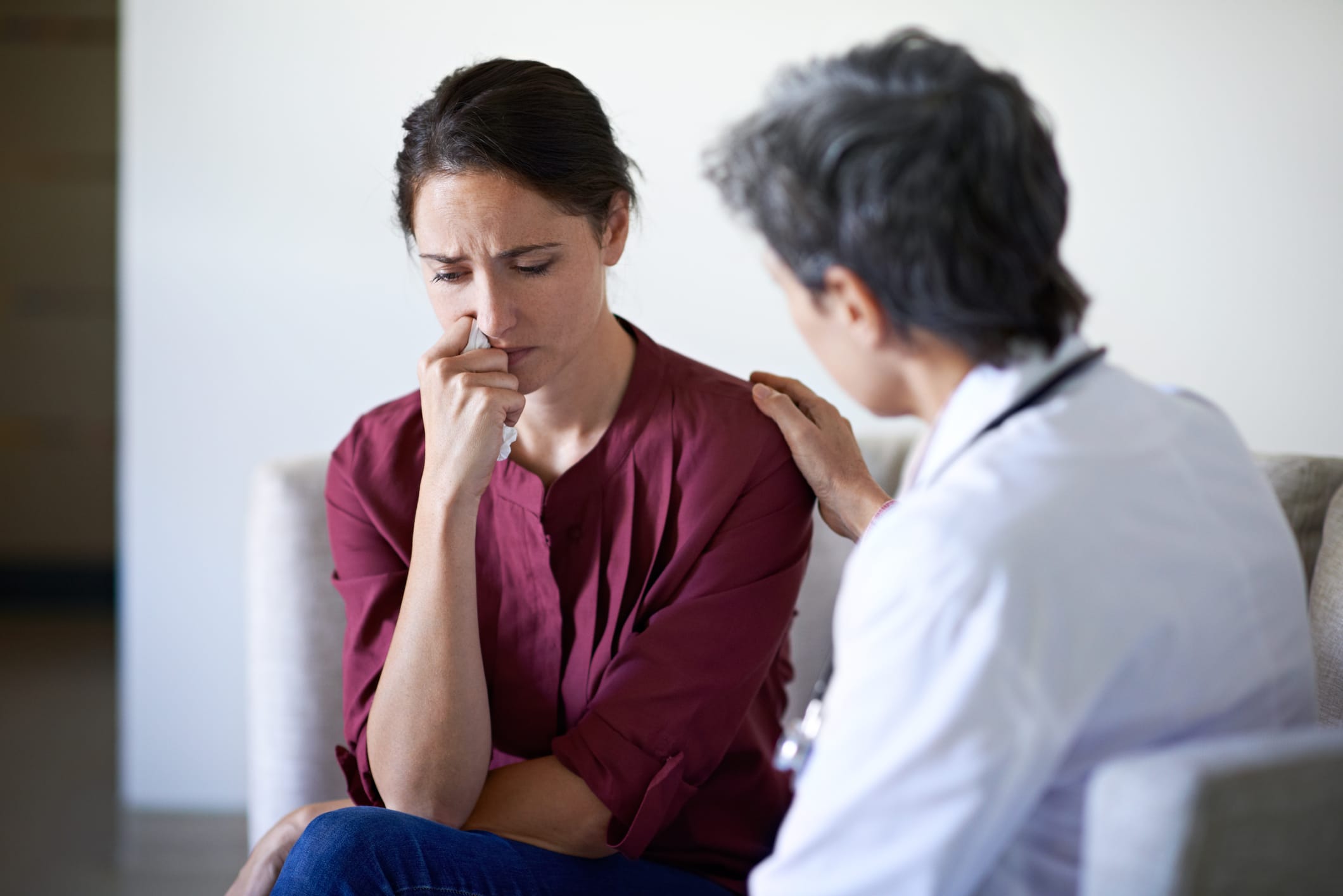This article was published on: 04/4/25 5:52 PM

Written by Christian Paulisich, Graduate Intern
One of the most common questions patients ask their therapist at the beginning of treatment is, how long will it take me to feel better? The answer might be shorter than you think.
Intensive treatment for obsessive compulsive disorder (OCD) and anxiety disorders offers patients the opportunity to receive all the qualities and benefits of research-supported treatments such as Cognitive Behavioral Therapy (CBT) and Exposure with Response Prevention (ERP), typically administered in weekly forty-five minute-to-one-hour-long sessions, but with longer, more frequent sessions over a shorter period of time.
The schedules for intensive OCD and anxiety therapy vary among providers. Intensiv programs should be tailored to meet each patient’s particular needs. This means a treatment plan for one individual could look different from that of another. Some organizations offer a standardized intensive program and others offer more individualized intensive programs. For example, one person may benefit from multiple hours a day for a week or two, another might benefit from sessions for a couple hours a day, three days a week for six weeks, etc. While this may complete treatment for some, others may benefit from continued weekly or less frequent sessions to maintain treatment gains.
Regardless of intensive versus standard treatment, the key components of therapy remain the same. The therapist helps the patient better understand what is driving their distressing symptoms, how certain thinking and behavioral patterns maintain them and how treatment (CBT) works. This part of therapy is called psychoeducation. The next phase involves cognitive appraisal and reappraisal to correct responses to triggering distressing thoughts and then, the core and backbone of CBT, is the behavioral work. The behavioral component involves developing an individualized list of exposure and response prevention exercises to conduct both in-session with the therapist and independently in between sessions. The last component of CBT is relapse prevention.
While these are the core components of a typical CBT treatment program, other exercises are often incorporated per individual need. For example, some people may need help with motivation, distress tolerance, emotion regulation, self-compassion and some people respond well when the therapist incorporates a more value based and/or mindfulness approach. While every patient will receive the first line CBT treatment program, treatment should be tailored to meet individual needs.
Research demonstrates the effectiveness of intensive treatment for both adults and children with OCD and/or anxiety disorders, such as social anxiety disorder and panic disorder, explaining that “exposures are the active ingredient of CBT that most reliably predicts OCD
symptom improvement among both pediatric and adult samples” (Canavera et al., 2023; Iverson et al., 2022; Trent et al., 2025; Wootton et al., 2018). With the accelerated treatment schedule of intensive therapy for OCD and anxiety disorders, patients may find quicker symptom reduction because of the dose-response effect of therapy. If we think about therapy like a pill, such as an antibiotic, when the doctor prescribes a stronger dose of treatment, and the patient adheres to the treatment as directed, we find that increasing the dose of antibiotic used to treat an illness/infection leads to a quicker physical recovery (Trent et al., 2025). By increasing the amount of that “active ingredient” in OCD and anxiety therapy, increasing the amount and frequency of conducting ERP exercises, the learning that drives positive treatment outcomes occurs at a faster rate.
The improved treatment outcomes found with intensive treatments extends to virtual therapy as well, given that virtual therapists incorporate as much ERP as they would in an in- person session. For example, in a study of adults with OCD, therapy which incorporated virtual ERP treatment caused similar patient outcomes as in-person treatment, but required an average of 2.6 more treatment days (Pinciotti et al., 2022). Research also supports the effectiveness of virtual, intensive therapy for children and adolescents with OCD and anxiety disorders (Gittins Stone et al., 2024). While the long-term outcomes of virtual-only ERP are still being researched, this would increase the access to quality care for so many individuals whose lives are impacted by their mental suffering but for whatever reason, struggle to get into the office.
There are numerous benefits to intensive treatment, especially for certain populations, such as working individuals, students, and patients from rural settings, who may struggle to commit to weekly therapy for three months or more, which can be incredibly costly in time off work, missed classes, and transportation. Being able to offer patients a shorter-term treatment gives them an alternative which could be life-changing and would ensure that more people struggling with OCD and anxiety disorders can complete a full treatment program.
Sources:
Canavera, Kristin E., Ollendick, Thomas H., Farrell, Lara J., & Whiteside, Stephen P. H. (2023). A Five-Day Intensive Treatment for Pediatric Obsessive-Compulsive Disorder: A Multiple Baseline Design Pilot Study. Evidence-Based Practice in Child and Adolescent Mental Health, 8(1), 120–132. https://doi.org/10.1080/23794925.2022.2034553
Gittins Stone, Daniel Ian, Elkins, R. Meredith, Gardner, Melissa, Boger, Kathryn, & Sperling, Jacqueline. (2024). Examining the Effectiveness of an Intensive Telemental Health Treatment for Pediatric Anxiety and OCD During the COVID-19 Pandemic and Pediatric Mental Health Crisis. Child Psychiatry and Human Development, 55(5), 1398–1412. https://doi.org/10.1007/s10578-023-01500-5
Iversen, Hanne Moe, Eide, Thorstein Olsen, Harvold, Mathea, Solem, Stian, Kvale, Gerd, Hansen, Bjarne, & Hagen, Kristen. (2022). The Bergen 4-day treatment for panic disorder: replication and implementation in a new clinic. BMC Psychiatry, 22(1), 1–728. https://doi.org/10.1186/s12888-022-04380-6
Pinciotti, Caitlin M., Bulkes, Nyssa Z., Horvath, Gregor, & Riemann, Bradley C. (2022). Efficacy of intensive CBT telehealth for obsessive-compulsive disorder during the COVID-19 pandemic. Journal of Obsessive-Compulsive and Related Disorders, 32, 100705–100705. https://doi.org/10.1016/j.jocrd.2021.100705
Trent, Erika S., Zhou, Robert J., Mammo, Liya, Goodman, Wayne K., & Storch, Eric A. (2025). High intensity approaches to exposure and response prevention for obsessive-compulsive disorder. Behavioural Brain Research, 481, 115427-. https://doi.org/10.1016/j.bbr.2025.115427
Wootton, Bethany M., Hunn, Alexandra, Moody, Annabelle, Lusk, Bethany R., Ranson, Valerie A., & Felmingham, Kim L. (2018). Accelerated Outpatient Individual Cognitive Behavioural Therapy for Social Anxiety Disorder: A Preliminary Pilot Study. Behavioural and Cognitive Psychotherapy, 46(6), 690–705. https://doi.org/10.1017/S1352465818000267

 The Maryland Anxiety Center was founded by Andrea G. Batton, LCPC with a vision of creating a practice where clinicians and staff work cohesively and collaboratively with patients to provide optimal psychological care. The Maryland Anxiety Center specializes in the treatment of anxiety and related disorders from a cognitive behavioral perspective, the gold-standard and most effective treatment for such conditions.
The Maryland Anxiety Center was founded by Andrea G. Batton, LCPC with a vision of creating a practice where clinicians and staff work cohesively and collaboratively with patients to provide optimal psychological care. The Maryland Anxiety Center specializes in the treatment of anxiety and related disorders from a cognitive behavioral perspective, the gold-standard and most effective treatment for such conditions.